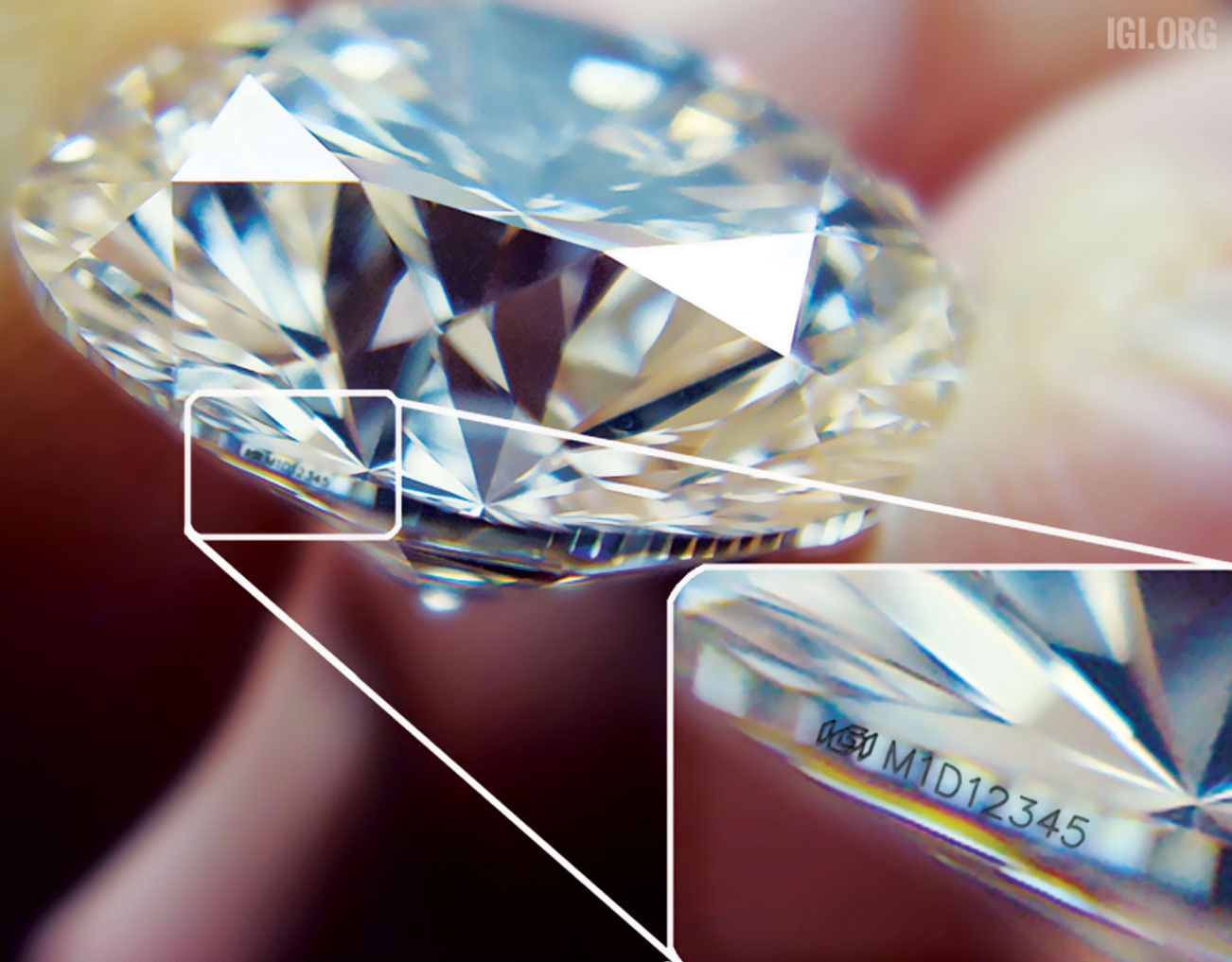what is LAB grown
mined diamonds are a gift of nature whereas manmade diamonds are a gift of human wisdom
– Lin Qiang, Vice-President, World Federation of Diamond Bourses, President of Shanghai Diamond Exchange

A lab created rough diamond that will be cut and polished into the desired shape
- These diamonds go by many different names — lab grown, lab created, lab made, man made and also engineered diamonds. They all point to the fact that such diamonds are created in a laboratory rather than occurring in nature and mined from the earth.
- Some of the diamond laboratories use advanced technology to mimic the conditions of extremely high temperatures and pressures that natural diamonds undergo when they form deep in the earth’s mantle. Other laboratories use a different method of production that is Chemical Vapor Deposition. Both are explained in more detail below on this page.
- It is the origin which is the main factor that sets apart laboratory grown diamonds from natural mined ones. Apart from the origin, both lab made and mined diamonds essentially have the same chemical, optical and physical properties, and crystal structure as natural diamonds.
- 1950s: Lab grown diamonds are first produced using the high pressure, high temperature (HPHT) method for industrial purposes and are used in telecommunications and laser optics and as abrasives and more.
- 1970s: General Electric researchers create the first gem-quality synthetic diamonds. They are of high enough clarity and large enough size to be used as gems in jewelry.
- Mid-1980s: Manufacturers grow commercial quantities of gem-quality crystals. These lab-created diamonds are initially mostly small and yellowish or brownish in color, but their quality improves over the ensuing decades.
- 2000s: Diamonds are created using the chemical-vapor deposition (CVD) method, which requires lower pressure and temperatures than the HPHT method.
- Mid-2010s: Colorless lab-made diamonds are available in the jewelry market in commercial quantities. Both HPHT and CVD continue to be popular methods of lab grown diamond production.
Timeline source: GIA.edu Gemological Institute of America
GIA has been grading laboratory-grown diamonds since 2007. Beginning July 1, 2019, GIA Laboratory-Grown Diamond Reports no longer use the term “synthetic”. The GIA Laboratory-Grown Diamond Report includes the standard GIA color, clarity and cut grading scales for reference purposes. The reports use descriptive terms to identify color and clarity. The certificate includes a clear indication that this report is of a LABGROWN diamond.

The massive machines used to replicate the tremendous pressures and extreme temperatures transforming carbon into diamonds
FAQ: Facts about Lab grown diamonds
Laboratory grown diamonds are classified as diamond, not synthetics nor simulants. LAB-grown are REAL diamonds. They are identical in the chemical composition and atomic structure, made from the same element that is Carbon, to natural mined diamonds.
Unlike diamond synthetics or simulants such as cubic zirconia, moissonite, and white sapphire, LAB-grown diamonds share the same optical, physical, and chemical properties as natural mined diamonds, which means they will endure daily wear and always look gorgeous.
Laboratory grown diamonds begin with a diamond seed, that is a slice of a natural diamond. There are currently two methods of production: HPHT and CVD.
High Pressure High Temperature [HPHT]:
These diamonds are made using massive machines that mimics the extreme conditions that results in the formation of natural diamonds within the earths upper mantle. The intense high pressures (870,000 PSI) and high temperatures (1,700 degrees Celsius) – hence the abbreviation HPHT – applied in those massive machines results in diamond source powder dissolving in molten metal flux and deposited onto the diamond seed crystals. Over several weeks the diamond seed grows until the required size is reached.
Chemical Vapor Deposition [CVD]:
This method involves a mixture of hydrogen and methane gas heated under microwave power in a chamber. CVD method takes place at lower pressure and temperature, roughly between one and two atmospheric pressure (27 PSI) and less than half the heat (700 degrees Celsius) required than natural diamond formation. The electrons separate, forming plasma gas, and the freed carbon then rains down on the seed, growing new diamond crystals. However, silicon inclusions are sometimes observed, which are the result of silica windows in the growth chamber being etched off by the ionized gases and introduced into the diamond as it forms during the CVD method. Generally it induces more trace elements within the diamond that may contain dark graphite inclusions or some other mineral inclusions, and typically this process produces brown or gray diamonds, which are later turned colorless through an HPHT annealing process.
We advocate the HPHT process of production and thus are proud to offer the highest qualities in LAB-grown diamonds sourced from HPHT manufacturers.
Laboratory grown diamonds are produced using electricity as the source of energy. A diamond seed is placed into the machine chamber and pure carbon gas is then injected and compressed using HPHT technology. Once the rough diamond has grown to the required size they may be cut into shape by diamond cutters, most times in-house. The LAB-grown diamond is then sold on to the client. Furthermore some of our manufacturers employ solar panels to enhance the use of renewable energy during production.
On the other hand, mined-diamonds stretch through a long supply chain that requires geologists to survey potential areas of interest, excavating samples of dirt and earth to be studied, contracting mining companies to carry out the work, which requires heavy investment of machines, labor, fuel, oil, on-site offices, among other expenses. Afterwards, the excavated material consisting of rocks, debris and diamonds – of which averages 200 tonnes of earth per 1 carat of diamond – would have to be sorted, sold to the diamond cutters, who in turn sell the cut and polished diamonds to wholesalers, which then sell to retailers, and finally sold into the hands of the end consumers. This all adds up to the high costs of mined-diamonds.
Mined-diamonds are more expensive due to the influential pricing imposed by the large mining companies.
The lower prices of LAB-grown diamonds directly translate to lower customs and duties charges, insurance and transportation charges, and sales tax amounts as opposed to the higher priced mined-diamonds that result in higher taxes, fees, and transportation insurance.
Customers looking for a mining-free alternative or a larger stone within their budget may prefer lab diamonds as they are generally at a lower price point compared to the natural mined options.
Energy saving: 1 carat of LAB-grown diamond weighs 0.20 grams, and its made of 100% carbon, so all that’s needed to produce 1 carat of LAB-grown diamond is 0.20 grams of pure carbon and some electricity (as compared to 200 tonnes of dirt and earth extraction for 1 carat of mined diamonds)
Consider growing diamonds as you would a certain plant, say roses for example. There are places where they grow naturally and organically, and to get those you would have to travel to places where they naturally occur and cut them out. Or, you can grow roses in a greenhouse. When you grow roses in a greenhouse or create diamonds in a lab, you have far more control over the process. You can create it in the color, size and shape required, in the most efficient manner of the precious resources of our planet.
The environmental benefits include: No pollution, no native community displacements, no wildlife displacement, no animals harmed, no ground water pollution, no land displacement, and no carbon footprint.
Yes laboratory grown diamonds have a resale value, just as mined diamonds do. There will be a difference between the purchased price and the selling price as the retailer that purchases your diamond (mined or lab) must be able to resell it for a profit. The resale value is typically offered lower than traditional wholesale pricing for a pre-owned diamond.
It is almost impossible to sell a mined or lab diamond purchased for a profit, considering inflation as well into the equation. This does not include investment-grade mined-diamonds.
It is a myth that lab diamonds are always readily available and are “flooding” the market. It is also false that because they are man-made this means it is infinite in supply. Rather, laboratory grown diamonds make up a small portion of the overall diamond market and are available in limited supply as the time needed to produce the jewelry grade gem quality and larger sizes may take weeks and up to few months to produce from a single diamond seed.
It is a fact that in the diamond industry prices or discounts may change thereby affecting the prices of both mined-diamonds as well as laboratory grown diamonds.
Any diamond whether mined or laboratory grown is not meant as an investment, with the exception of extremely rare natural mined diamonds that posses unique properties such as color, size, or historical significance. Another side to consider is the sentimental value and to some degree as a store of wealth. They may be handed down to your children or future relatives, thereby ascertaining to your family or loved ones the value of the diamond both as sentimental and monetary. Taking into consideration the effects of inflation if the next generation of your family were to purchase the same diamond it would cost them more money in the future rather than if that same diamond was purchased years or decades earlier.
The average consumer of diamonds will certainly appreciate purchasing them sooner as opposed to later due to the impact of monetary inflation, that is the purchasing power of money decreasing over time.
The simple truth is no. The diamond tester will not differentiate between a mined-diamond and a LAB-grown. Laboratory-made diamonds have the same physical, optical, chemical, thermal and electric conductivity as a mined-diamond. While it is nearly impossible to detect laboratory grown diamonds by sight, the growing process leaves behind evidence of any diamond’s origin. The only way to distinguish them through testing is by a reputable gemological laboratory such as GIA (Gemological Institute of America), IGI (International Gemological Institute), HRD Antwerp (Hoge Raad voor Diamant – translated as the ‘Diamond High Council’) and other reputable gemological laboratories. Advanced screening and testing equipment is necessary, no single device can do it all.
LAB-grown diamonds may have a laser inscribed certificate number onto the girdle of the stone which is visible using a high magnification loupe or microscope, indicating the letters LG that stand for LAB-Grown.

Most diamonds include a microscopic tamper-proof laser inscription to ensure authenticity. Lab grown diamonds will have LG inscribed before the registry number as such LG123456789
the difference in knowing
mined
The spotlight on ethical diamonds have been environmental sustainability, fair wages, and human rights that include preventing child labor, unsafe working conditions, and economic degradation. The Kimberley Process Certification Scheme was established in 2003 to ensure most mined diamonds on the market are conflict-free, yet the possibility remains that a conflict diamond finds its way into unsuspecting consumers hands. Unfortunately the process is not 100% effective and there have been fraudulent KP Certification in some countries. Also the Scheme does not protect against human rights violations that aren’t part of a civil war conflict, including child labor and unfair wages. It also can’t guarantee environmental sustainability.
lab
Lab grown diamonds address the issues that have plagued mining companies for decades. Lab grown diamonds eradicate the issues concerning environmental, political, and human rights abuses. With a lab made diamond you will also significantly benefit from the lower costs, that enables you to purchase larger and higher quality than a mined diamond.
With some research it is possible to avoid companies that donate to certain political causes or buying gems that contribute to economic instability as in the case of conflict diamonds. However, with lab-made diamonds, you don’t have to worry about the Kimberley Process or environmental contamination. Creating a diamond also has a much lower energy cost than mining one does.

